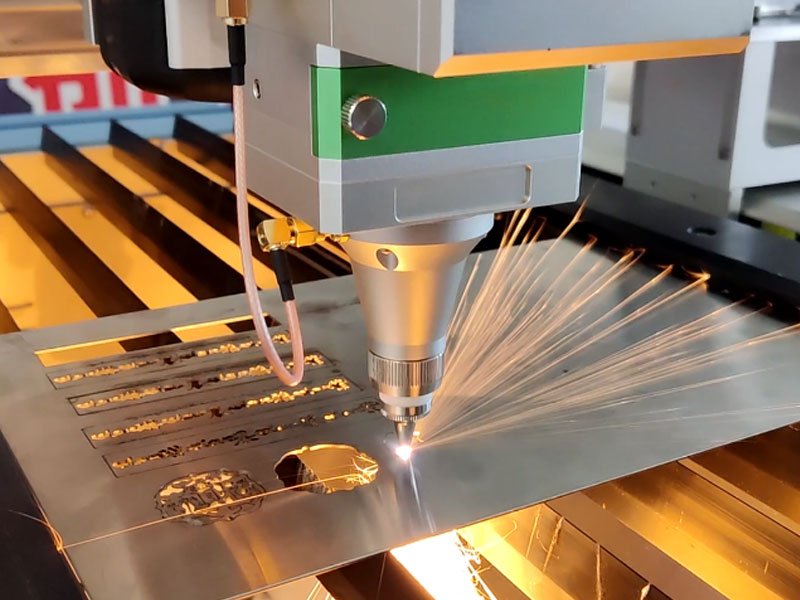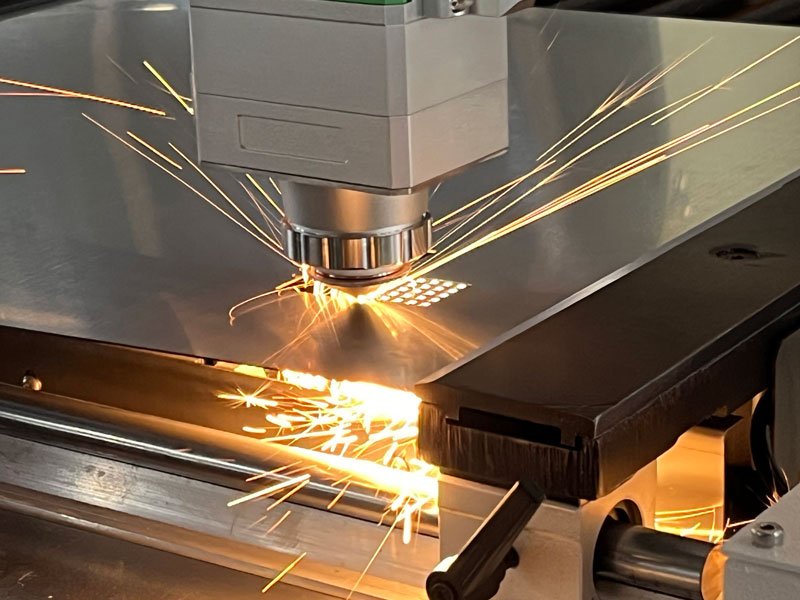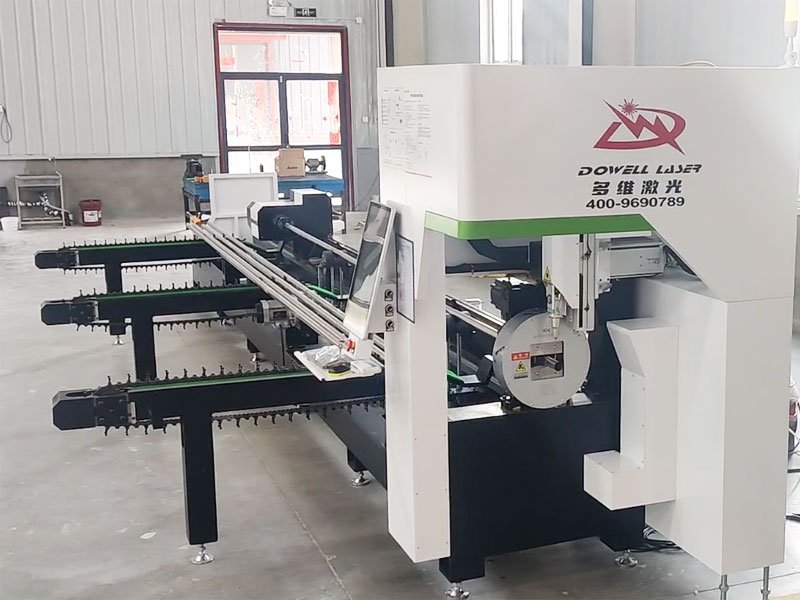Wood drying kiln is an important part of the wood processing industry. It removes moisture from wood by controlling temperature and humidity to prevent deformation and cracking. Metal laser cutting technology, with its advantages of high precision, high efficiency and flexibility, is profoundly changing the way wood drying kilns are manufactured.

How a wood drying kiln works
A wood drying kiln accelerates the natural drying process of wood through precisely controlled environmental conditions, such as temperature and humidity. This process is essential to improving the stability and durability of wood. The application of laser cutting technology makes the construction of the drying kiln more precise and efficient.
Disadvantages Of Wood Drying Kiln Manufacturing
Low cutting accuracy: Traditional cutting methods such as plasma cutting and flame cutting have low cutting accuracy, which are prone to burrs and deformation, affecting the sealing and performance of the drying kiln.
Low efficiency: Traditional cutting methods have a long production cycle and require a lot of manual operation, resulting in low production efficiency.
High cost: A lot of waste is generated during the cutting process, and a lot of subsequent processing is required, which increases production costs.

Advantages of Metal Laser Cutting Technology
Metal laser cutting technology has brought revolutionary changes to the manufacturing of wood drying kilns with its non-contact processing, high energy density, and precise control.
- High-precision cutting: It can achieve micron-level cutting accuracy, ensure the consistency of the size of the cut pieces, and improve the sealing and stability of the drying kiln.
- Complex shape processing: It can easily cut various complex shapes and patterns to meet the personalized needs of the drying kiln for different parts.
- Efficiency improvement: CNC processing, high degree of automated production, fast cutting speed, greatly shortening the production cycle.
- Cost reduction: High material utilization, reduced waste generation, and reduced production costs.
Kiln for Wood Drying Equipment Manufacturing Materials
- Stainless steel sheet: 304 stainless steel is an ideal material for building a drying kiln due to its durability and high temperature resistance. Metal laser cutting can precisely cut stainless steel sheets to produce various shapes of trays, guides, dampers, and other components.
- Insulation materials: Insulation materials are used to ensure the safety and efficiency of electrical systems.
- Processing of electronic components: High-frequency generators, transformers, capacitors, and cooling systems, electronic components used in drying kilns require precise mounting holes. Laser cutting can quickly and efficiently process mounting holes of various sizes and shapes, improving the installation accuracy of electronic components.

Wood Drying Kiln Equipment Manufacturing Process
1.Stainless steel cutting:
Metal laser cutting machine can accurately cut stainless steel sheets (such as 304, 316 and other different models, this material is ideal for drying kiln construction due to its corrosion resistance and heat resistance), cut into the required shape and size, such as the side plate, top plate, bottom plate of the kiln body, etc. Ensure the accuracy of the cutting size for subsequent assembly.
2.Stamping and bending:
304 stainless steel sheets need to be stamped and bent to form the various components of the drying kiln. Such as ventilation ducts, mounting brackets for heating devices, fixings for temperature and humidity detection devices, etc.
3.Welding:
Suitable welding process (such as argon arc welding, arc welding, etc.) to weld the side plate, top plate, bottom plate, etc. into the kiln body of the drying kiln. During the welding process, attention should be paid to controlling parameters such as welding current, voltage, welding speed, etc. to ensure welding quality and avoid welding defects such as pores, slag inclusions, cracks, etc. At the same time, the frame support structure is welded and assembled to ensure that it is firm and reliable.

4.Kiln body assembly:
- Install the frame structure: Install the welded frame support structure to the predetermined position, and use bolts, nuts and other connectors to fix it to ensure the horizontality and verticality of the frame. The frame structure plays the role of supporting and fixing the kiln body, and it must be guaranteed to have sufficient strength and stability.
- Install the kiln body plate: Install the cut and welded stainless steel plate on the frame, and fix it by welding or using bolts and other connectors to form a closed kiln body of the drying kiln. During the installation process, pay attention to the sealing of the connection between the plates, and use sealing strips or sealants for sealing to prevent gas leakage.
- Install the heating device: According to the heating method of the drying kiln (such as steam heating, electric heating, gas heating, etc.), install the corresponding heat treatment equipment. For example, for a steam-heated drying kiln, install steam pipes and radiators; for an electrically heated drying kiln, install electric heating elements, etc. The installation of the heating device should be firm and reliable, and the connection parts with the kiln body should be sealed to prevent heat leakage.
- Install the temperature and humidity detection control device: Install a temperature and humidity sensor in the drying kiln, and the position of the sensor should be able to accurately reflect the temperature and humidity in the kiln. Connect the sensor to the control system, and the control system can automatically adjust the heating device, ventilation system, etc. according to the information fed back by the sensor to achieve precise control of the temperature and humidity in the drying kiln.

5.Debugging and Testing
Electrical system debugging: Check the electrical system of the drying kiln, including whether the connection of wires is correct, whether the electrical equipment is working properly, whether the program of the control system is correct, etc. Power on the electrical system to ensure that all electrical equipment can operate according to the design requirements.
Mechanical system debugging: Check whether the mechanical parts of the drying kiln, such as fans, transmission devices, door opening and closing mechanisms, etc., are flexible, and whether there are problems such as jamming and abnormal noise. Debug the mechanical system to ensure that it can work properly.
Temperature and humidity control debugging: Set different temperature and humidity parameters, debug the temperature and humidity control system of the drying kiln, and check whether the control system can accurately control the temperature and humidity in the drying kiln. Observe the changes in temperature and humidity, and adjust the parameters of the control system to achieve the best control effect.
Overall performance test: Put a certain amount of wood in the drying kiln for trial drying to test whether the drying effect, drying speed, energy consumption and other performance indicators of the drying kiln meet the design requirements. According to the results of the trial drying, further adjust and optimize the parameters of the drying kiln.

6.Kiln for Drying Woodsurface Treatment and Protection
- Surface cleaning: Clean the outer surface of the kiln to remove welding spatter, oil, dust and other impurities to make the surface clean and tidy.
- Surface anti-corrosion treatment: In order to improve the corrosion resistance of the kiln, the outer surface of the stainless steel plate is treated with anti-corrosion treatment, such as spraying anti-corrosion paint, galvanizing, etc. The anti-corrosion treatment should be uniform and firm to ensure that it can effectively prevent the external environment from corroding the kiln.
7.Acceptance and packaging
Final acceptance: Conduct a comprehensive acceptance of the drying kiln after surface treatment and commissioning, and check whether various performance indicators meet the design requirements and relevant standards. After acceptance, an acceptance report will be issued.
Packaging and transportation: Packaging the drying kiln that has passed the acceptance, using wooden boxes, plastic films and other packaging materials to protect and fix the drying kiln to prevent collision and damage during transportation. After packaging, the drying kiln will be transported to the location specified by the customer.

Effect of Laser Cutting Technology on Wood Dryer Kiln Performance
- Structure and assembly
Metal laser cutting technology improves the structure and assembly accuracy of wood drying kilns. Precise cutting makes the size of components accurate, enhances sealing, improves drying efficiency and energy utilization. It can also process complex shapes, optimize internal structures, make hot air flow more evenly, and improve the uniformity and quality of wood drying.
- Heat transfer and drying efficiency
This technology is conducive to heat transfer. After cutting, the edges of the plates are smooth and fit tightly, reducing thermal resistance. Reduce heat leakage, and install more conveniently with insulation materials, improve insulation performance, reduce energy consumption, make wood heat more evenly and quickly, improve drying efficiency, and shorten the drying cycle.
- Operation stability and reliability
Ensure component consistency and reduce operational instability and failure probability. Non-contact cutting makes the stress of the plates uniform, reduces the risk of deformation and cracking, and improves the reliability and service life of the drying kiln. Ensure more stability during operation and reduce hidden dangers caused by material problems.
- Maintenance and cleaning
After laser cutting, the surface of stainless steel is smooth, not easy to accumulate dust and dirt, easy to clean, and reduce corrosion and bacterial growth. During maintenance and repair, parts replacement and installation are convenient, which reduces time and workload, improves maintenance efficiency, and ensures that the drying kiln quickly resumes normal operation.

Conclusion
The introduction of metal laser cutting technology has brought new development opportunities to the manufacture of wood drying kilns. By improving cutting accuracy, increasing production efficiency, and reducing production costs, laser cutting technology is leading the wood drying kiln manufacturing industry to develop in the direction of higher quality and higher efficiency. With the continuous improvement of laser cutting technology and the further reduction of costs, its application prospects in the manufacture of wood drying kilns will be broader.



